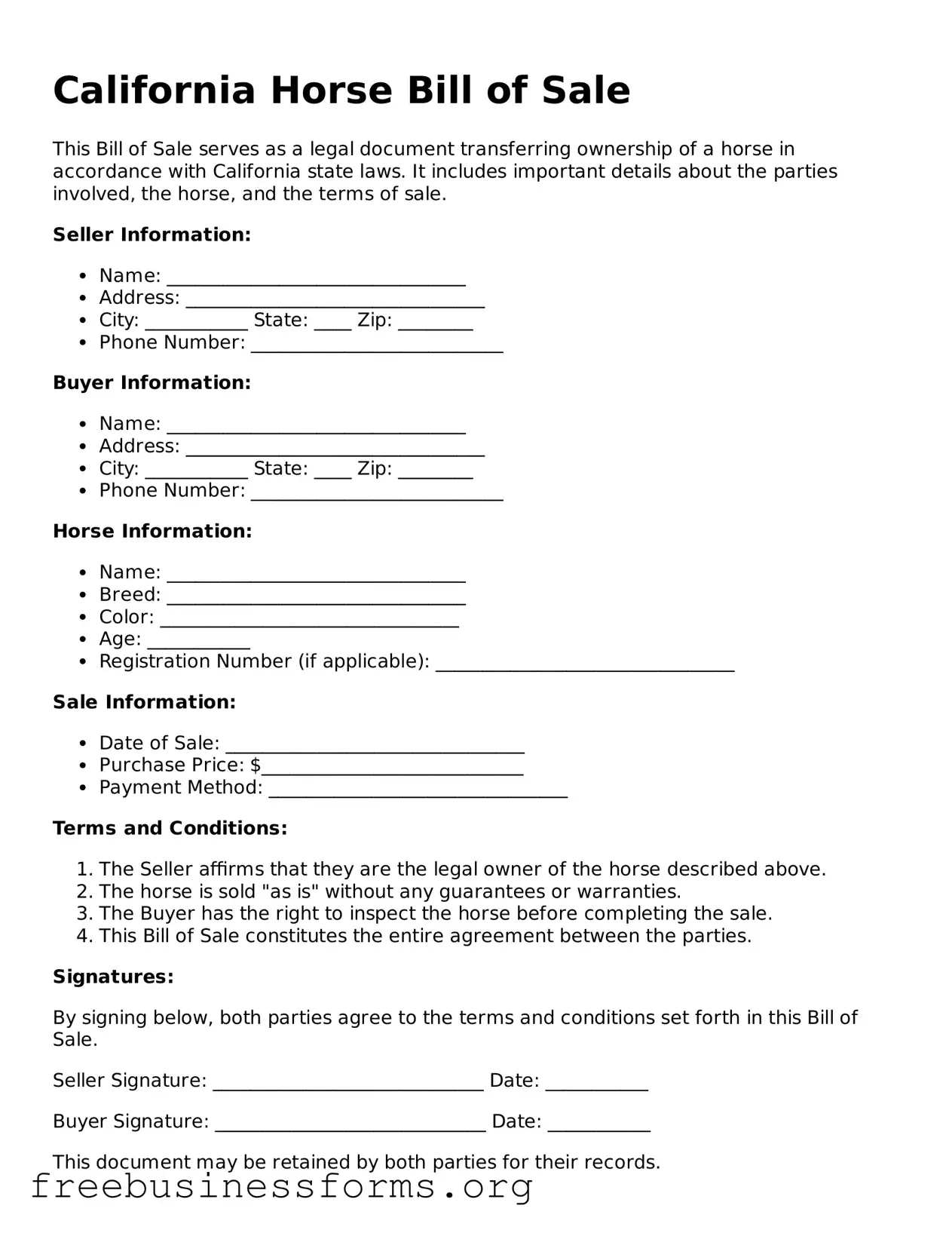California Horse Bill of Sale
This Bill of Sale serves as a legal document transferring ownership of a horse in accordance with California state laws. It includes important details about the parties involved, the horse, and the terms of sale.
Seller Information:
- Name: ________________________________
- Address: ________________________________
- City: ___________ State: ____ Zip: ________
- Phone Number: ___________________________
Buyer Information:
- Name: ________________________________
- Address: ________________________________
- City: ___________ State: ____ Zip: ________
- Phone Number: ___________________________
Horse Information:
- Name: ________________________________
- Breed: ________________________________
- Color: ________________________________
- Age: ___________
- Registration Number (if applicable): ________________________________
Sale Information:
- Date of Sale: ________________________________
- Purchase Price: $____________________________
- Payment Method: ________________________________
Terms and Conditions:
- The Seller affirms that they are the legal owner of the horse described above.
- The horse is sold "as is" without any guarantees or warranties.
- The Buyer has the right to inspect the horse before completing the sale.
- This Bill of Sale constitutes the entire agreement between the parties.
Signatures:
By signing below, both parties agree to the terms and conditions set forth in this Bill of Sale.
Seller Signature: _____________________________ Date: ___________
Buyer Signature: _____________________________ Date: ___________
This document may be retained by both parties for their records.
